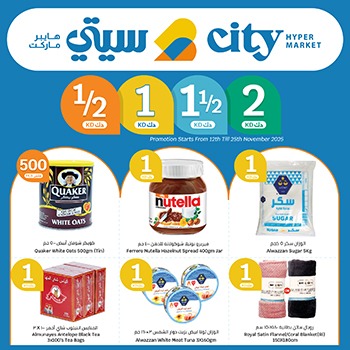How tastes, trends, and tech influence F&B in Kuwait

The Times Kuwait Report
• Lebanese cuisine most popular in Kuwait followed by Indian and local
The food and beverage (F&B) sector like many others in Kuwait is undergoing significant transformations. Rapid changes in the behavior of consumers and in responses by restaurant and café owners, as well as other stakeholders in the business is reshaping the F&B industry.
In a bid to unravel the F&B landscape in the country, KPMG Kuwait, a leading provider of audit, tax, and advisory services, conducted a survey of over 350 consumers and several industry leaders in Kuwait to understand their respective perspectives. To discover deeper insights from the data collected through the survey, and to present them in a precise, accurate, and meaningful way, KPMG Kuwait teamed up with scholars in Digital Marketing and Data Science at Emlyon Business School, a premier international business school in France.
Findings from the analytical study were presented in a recently released report titled, ‘Food for Thought: Tastes, Trends and Triumphs’. The survey, which gauges the interplay between what consumers want and what businesses are doing about it, particularly in the restaurants and cafés segment of the F&B sector in Kuwait, is an eye-opener in many aspects.
One of the interesting findings from the consumer survey was the prevalence of Lebanese, Indian and local foods, as these three were the most sought-after cuisines in the country. The love for falafels and shawarmas reigned supreme in the country, as 15.9 percent of the respondents expressed their love for the Levantine cuisine. Considering Kuwait’s population comprises only about 42‚000 Lebanese people, the cuisine’s rise to the top can be attributed to the universally appealing flavors, spice profile, and perhaps the generous serving of hummus that finds its way on many platters.
In addition to Lebanese cuisine, food fans also want to indulge in a generous serving of Indian cuisine, as well as enjoy the enriching experience that local cuisine offers. The preference for second and third most popular cuisines in Kuwait was nearly similar with 14.4 percent choosing Indian, and 14.2 percent going with local fare. But whether it is ‘shawarmas’, ‘tikka masala’, ‘machboos laham’, or some other food that reigns at the top in the future will depend to a large extent on how accessible and affordable they will be, and how many of the convenience needs of customers, such as home delivery and digital dining, they will fulfill.
Another interesting takeaway from the survey was that, despite bigger brands starting to offer meatless and plant-based alternatives, the likelihood of such offerings creating a distinct, sought-after segment of their own still remains a distant possibility. Uneven demand and premium price points of plant-based alternatives make them affordable on a frequent basis to only a small portion of the country’s population.
When it came to dine-out or order-in the survey revealed that the majority (45.4%) of food aficionados in Kuwait would rather order-in from the comfort of their homes than eat out. However, a near equal number (43.03%) preferred to dine at their favorite food destination, or a newly opened one, for the sheer experience of it. For those dining out, venues of fine dining appealed to 41 percent, followed by casual dining (25.6%) and fast-food joints (15.38%). Over 75 percent of those dining out also said they did so at least 1–2 times per week on average, while a fifth of those eating out did so 3–4 times every week.
Nevertheless, the appetite of those who ordered food online at least 1–2 times a week surpassed that of those who choose to dine-in by nearly 7 percent, underlining that the convenience of eating at home superseded everything else. In addition, when ordering food online‚ the majority (73.9%) of food lovers in Kuwait predominantly use one (40%)‚ or a combination (60%)‚ of the country’s four most-popular food-delivery applications — Talabat (34.8%); Deliveroo (29.2%); Cravez (18.6%); and Get Dukkan (17.2%).
Ordering-in is particularly popular among those who are tech savvy, are under 45, and probably enjoy feasting their eyes on the fare before ordering. They want to see all that is on offer, what the food looks like, how people have rated them, and what price they come at, before placing their order. Also, a minority (11.52%) of survey respondents preferred grabbing food ‘on-the-go’, with nearly 69 percent of them choosing to purchase their ‘food-to-go’ through mobile applications instead of directly ordering from a restaurant.
When it came to beverage preference, the survey revealed that the thirst to have a glass of fresh juice narrowly trumped the desire to have a freshly brewed cup of coffee, but only marginally. Although an identical percentage of people relied on either juice (21.8%) or coffee (21.7%) as their daily driver, when it came to men alone, nearly half (45%) preferred their serving of caffeine over everything else. The average spend on coffee (KD1–50) was also much higher than that of juices (KD1–30), highlighting a clear preference among survey respondents for their caffeinated concoctions and the willingness to spend more for them.
Over generations, the shisha smoke has devised a way to infuse itself in Kuwait’s gastronomy, influencing food lovers to partake in smoking hookah either as part of regional traditions or to simply uplift the culinary experience. More than 80 percent of the individuals surveyed said they indulged in smoking shisha, with the majority (69.1%) of them visiting a shisha café at least 1–3 times per week. A small portion of the shisha smokers (7.3%), visited more frequently (4–6 times).
Other findings from the survey show that:
- Rising consumer awareness on sustainability is urging F&B businesses to push through support for green initiatives. Some of the green initiatives being incorporated by F&B businesses include, among others, reduction of food waste, energy and water conservation measures, and eco-friendly packaging and cutlery.
- The increasing appreciation of global flavors and the multinational demographics of Kuwait, is causing a surge in the demand for a variety of cuisines, upping the challenge for F&B business owners to curate offerings that have wide appeal.
- Technology is not merely changing how consumers are discovering new destinations or ordering food; it is making a notable dent in terms of developing newer and more unique recipes, reducing the time between placing and receiving an order, and ensuring consistency in taste.
- Across all ages, credit and debit cards (32.9%) were found to be the go-to mode of payment for consumers, followed by cash (26.8%). However, newer digital payment methods are gaining prominence, with a combined 40 percent of the participants choosing to use Apple/Google Pay (23%) and e-wallets (17.2%).
- While consumers are most influenced by others’ word of mouth when it comes to choosing an F&B establishment, loyalty programs have emerged as a strong favorite and a powerful tool for fostering customer retention.
The KPMG report concluded on the note that the F&B industry in Kuwait is at a crossroads, shaped by a complex interplay of consumer preferences, technological innovation, and sustainability-based concerns. To thrive in this industry, businesses must constantly seek to adapt, based on evolving demands and market trends, focusing on sustainability, embracing diversity in culinary offerings, leveraging technology, and enhancing customer engagement through personalized experiences.
Content credit:
KPMG Kuwait Food and Beverage Report — A collaboration between KPMG in Kuwait and Emlyon Business School France













